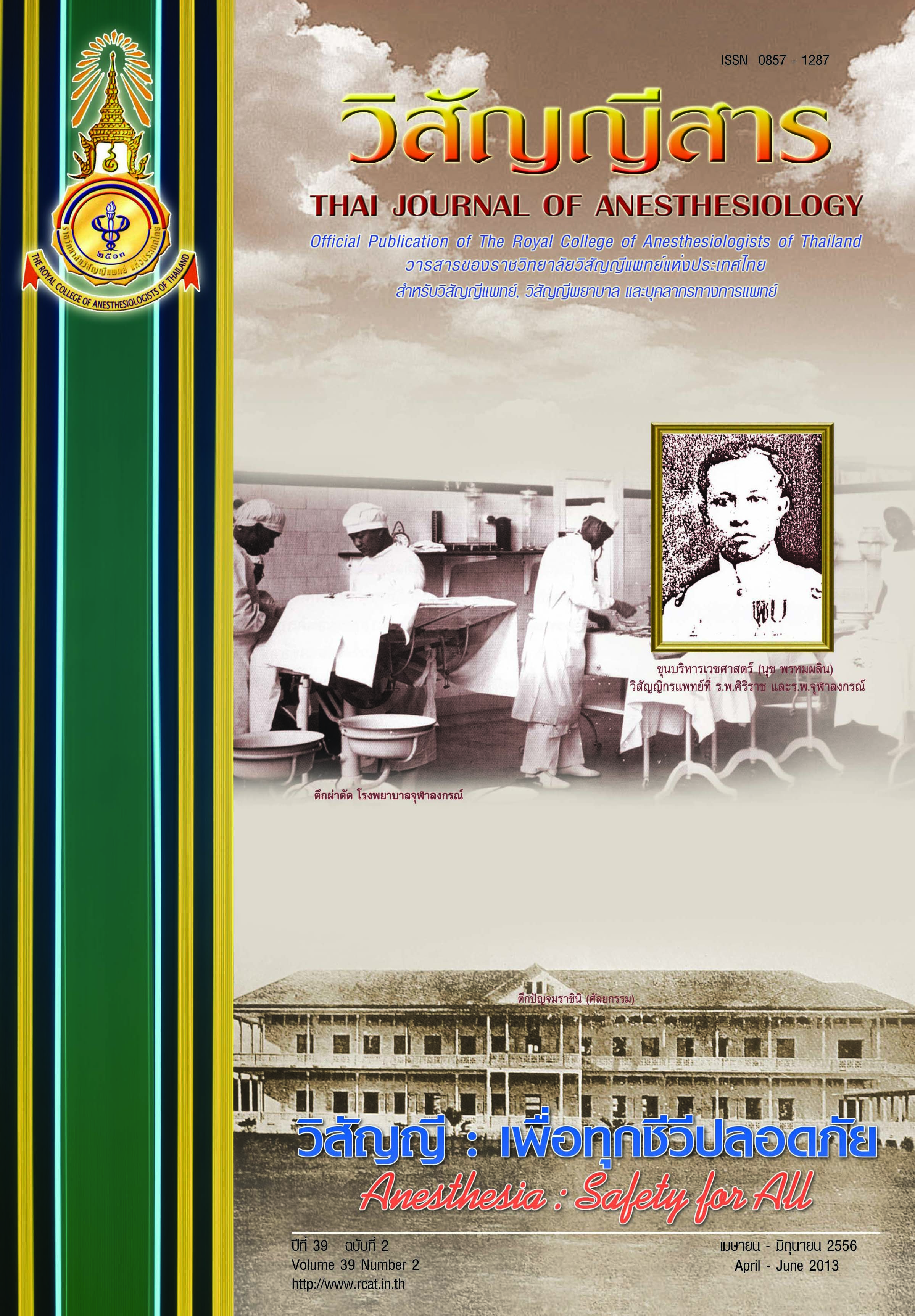Venous air embolism
Main Article Content
Abstract
Most reports on the topic of venous air embolism (VAE) primarily deal with neurosur-gical procedures, particularly in the sitting position. Strong emphasis should be placed on some iatrogenic events which caused the highest median payment and a rate of 100% payment-per-claim in United States of America. The morbidity and mortality rates from VAE are determined by the volume of air entrained, the type of gas injected, the rate of entrainment and the patient’s status. In patients with a high index of clinical suspicion of VAE, prompt diagnosis and rapid therapy initiation is necessary. This review will highlight the pathophysiology, clinical features, surgical procedures and interventions associated VAE, detection and management of VAE.
ภาวะฟองอากาศในหลอดเลือดดำ (Venous air embolism)
รายงานการเกิดฟองอากาศในหลอดเลือดดำส่วนใหญ่ถูกกล่าวถึงในการผ่าตัดสมองโดยเฉพาะการ ผ่าตัดในท่านั่ง อย่างไรก็ตาม การเกิดฟองอากาศในหลอดเลือดดำส่วนหนึ่งเกิดจากการกระทำของผู้ให้การ รักษาพยาบาล บุคลากรทางวิสัญญีควรให้ความสนใจและระมัดระวังการเกิดภาวะนี้ เนื่องจากการเกิดฟอง อากาศในหลอดเลือดดำนำไปสู่การฟ้องร้องและต้องเสียค่าใช้จ่ายในอัตราที่สูงมาก ดังรายงานของประเทศ สหรัฐอเมริกา ความรุนแรงของภาวะฟองอากาศในหลอดเลือดขึ้นอยู่กับปริมาณและความเร็วของฟองอากาศ ที่เข้าสู่หลอดเลือด นอกจากนี้ยังขึ้นกับชนิดของก๊าซและสภาพของผู้ป่วยด้วย การวินิจฉัยและการให้การ รักษาอย่างรวดเร็วในผู้ป่วยที่สงสัยว่าเกิดภาวะแทรกซ้อนนี้จะทำให้ผู้ป่วยพ้นภาวะวิกฤตได้อย่างปลอดภัย ในบทความนี้ได้กล่าวถึงพยาธิสรีวิทยา อาการและอาการแสดงทางคลินิก ชนิดของการผ่าตัดและภาวะที่ สัมพันธ์กับการเกิดภาวะฟองอากาศในหลอดเลือดดำ การวินิจฉัยโดยอาศัยเครื่องมือเฝ้าระวังต่างๆ พร้อมกับ การให้การรักษาภาวะฟองอากาศในหลอดเลือดดำ


